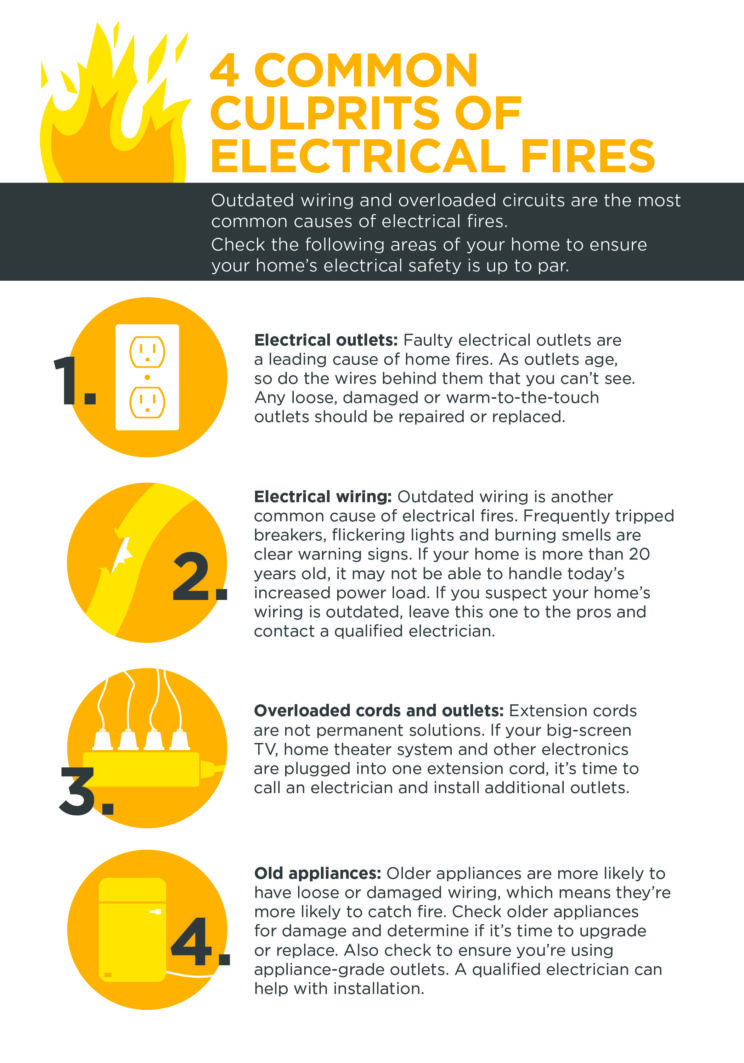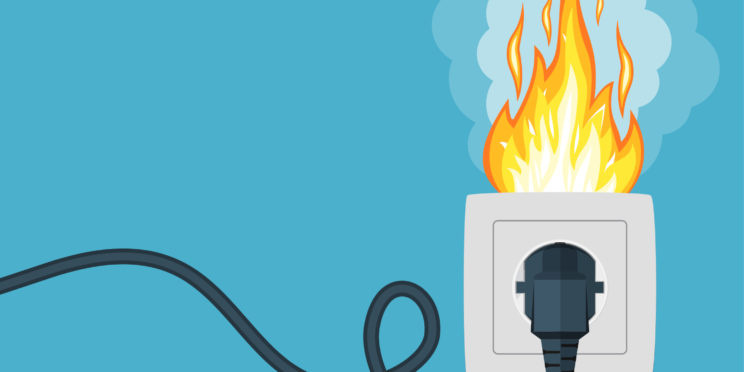May is National Electrical Safety Month, which is the perfect time to evaluate the safety of your home’s electrical system. Outdated wiring and overloaded circuits are the most common causes of electrical fires. Check the following areas of your home to ensure your home’s electrical safety is up to par.
- Electrical outlets: Faulty electrical outlets are a leading cause of home fires. As outlets age, so do the wires behind them that you can’t see. Any loose, damaged or warm-to-the-touch outlets should be repaired or replaced.
- Electrical wiring: Outdated wiring is another common cause of electrical fires. Frequently tripped breakers, flickering lights and burning smells are clear warning signs. If your home is more than 20 years old, it may not be able to handle today’s increased power load. If you suspect your home’s wiring is outdated, leave this one to the pros and contact a qualified electrician.
- Overloaded cords and outlets: Extension cords are not permanent solutions. If your big-screen TV, home theater system and other electronics are plugged into one extension cord, it’s time to call an electrician and install additional outlets.
- Old appliances: Older appliances are more likely to have loose or damaged wiring, which means they’re more likely to catch fire. Check older appliances for damage and determine if it’s time to upgrade or replace. Also check to ensure you’re using appliance-grade outlets. A qualified electrician can help with installation.
Abby Berry writes on consumer and cooperative affairs for the National Rural Electric Cooperative Association, the national trade association representing more than 900 local electric cooperatives. From growing suburbs to remote farming communities, electric co-ops serve as engines of economic development for 42 million Americans across 56 percent of the nation’s landscape.



